#Yorùbá
Explore tagged Tumblr posts
Video
@nettiperuna @jenni-e-doodles
59K notes
·
View notes
Text
about
- you can call me zi (z-eye) or icy ❄️
- '97. audhd. full-time teacher. 🇳🇬 lesbo living in 🇹🇭
fave arcane characters: mel, sevika, ekko, ambessa, & jinx
an artist who doesn’t art, a writer who doesn’t write, and a gifmaker who doesn’t make gifs anymore. i stopped using my main blog(s) and idk if i’ll ever use them again. i just want to keep using this sideblog as an outlet especially because melvika is one of the few things keeping me sane while i grieve the murder of one of my students 💔
anyways, yea… thanks to everyone who follows this little sideblog i don’t do much on. i had this user saved for a long time. finally decided to put it to use last year while waiting for season 2 of arcane so i’m glad now even more ppl see the vision. the sexiest women on the show being together just makes sense after all hehe 😌🤎
my writing (new - will likely be adding to this):
all | oneshots
#melvika#dykes pls interact 🧎🏾♀️#📍#💌#the way i used to be a vi girlie but her va being a zio and the character canonly being a cop killed that for me ☠️#anyways jinx grew on me and i understand her as the younger sister (twin.. but sister nonetheless)#gonna try to sleep or just find a fic to read till i pass out#usually not my thing but melvika is always an exception#also i headcanon mel as yorùbá because her va is and so am i 😌#need someone to throw that into a fic 😗💗#🪬
12 notes
·
View notes
Text

Romu 5:19 Nítorí gẹ́gẹ́ bí nípa àìgbọ́ràn ọkùnrin kan, ènìyàn púpọ̀ di ẹlẹ́ṣẹ̀, bẹ́ẹ̀ ni nípa ìgbọ́ràn ẹnìkan, a ó sọ ènìyàn púpọ̀ di olódodo.
For as by one man’s disobedience many were made sinners, so by that obedience of that one, shall many also be made righteous. — Romans 5:19 | Bíbélì Mímọ́ Yorùbá Òde Òn (BYO) and 1599 Geneva Bible (GNV) Yoruba Contemporary Bible Copyright © 2009, 2017 by Biblica, Inc.® All rights reserved worldwide and Geneva Bible, 1599 Edition. Published by Tolle Lege Press. All rights reserved. Cross References: Isaiah 53:11; Romans 5:12; Romans 5:15; Romans 5:18; Romans 11:32; Philippians 2:8
#obedience#salvation#righteousness#sinners#redemption#Romans 5:19#Book of Romans#New Testament#BYO#Bíbélì Mímọ́ Yorùbá Òde Òn#1599 Geneva Bible#GNV#Biblica Inc.#Tolle Lege Press.
2 notes
·
View notes
Text
Me every other month: hey, this Nigerian Instagram account is funny/relatable/insightful you know! Why don't I follow more Nigerians on here again?
Account: has a random homophobic/transphobic/misogynistic video further down their page
Me: ...yep
#this is social media in general but this happens the most on instagram#i was literally so happy when a Yoruba lady i subscribed to on YouTube casually mentioned same sex couples while talking about vocabulary#shoutout to yorùbá lessons with adérọ́nkẹ́#yaanin' sanguine
2 notes
·
View notes
Text

The Yoruba religion (Yoruba: Ìṣẹ̀ṣe), West African Orisa (Òrìṣà), or Isese (Ìṣẹ̀ṣe), comprises the traditional religious and spiritual concepts and practice of the Yoruba people. Its homeland is in present-day Southwestern Nigeria, which comprises the majority of Oyo, Ogun, Osun, Ondo, Ekiti, Kwara and Lagos States, as well as parts of Kogi state and the adjoining parts of Benin and Togo, commonly known as Yorubaland (Yoruba: Ilẹ̀ Káàárọ̀-Oòjíire).
It shares some parallels with the Vodun practiced by the neighboring Fon and Ewe peoples to the west and with the religion of the Edo people to the east. Yoruba religion is the basis for a number of religions in the New World, notably Santería, Umbanda, Trinidad Orisha, and Candomblé.[1] Yoruba religious beliefs are part of Itàn (history), the total complex of songs, histories, stories, and other cultural concepts which make up the Yoruba society.

The Yoruba name for the Yoruba indigenous religion is Ìṣẹ̀ṣẹ, which also refers to the traditions and rituals that encompass Yorùbá culture. The term comes from a contraction of the words: Ìṣẹ̀, meaning "source/root origin" and ìṣe, meaning "practice/tradition" coming together to mean "The original tradition"/"The tradition of antiquity" as many of the practices, beliefs, traditions, and observances of the Yoruba originate from the religious worship of Olodumare and the veneration of the Orisa.

According to Kola Abimbola, the Yorubas have evolved a robust cosmology. Nigerian Professor for Traditional African religions, Jacob K. Olupona, summarizes that central for the Yoruba religion, and which all beings possess, is known as "Ase", which is "the empowered word that must come to pass," the "life force" and "energy" that regulates all movement and activity in the universe".Every thought and action of each person or being in Aiyé (the physical realm) interact with the Supreme force, all other living things, including the Earth itself, as well as with Orun (the otherworld), in which gods, spirits and ancestors exist. The Yoruba religion can be described as a complex form of polytheism, with a Supreme but distant creator force, encompassing the whole universe.
The anthropologist Robert Voeks described Yoruba religion as being animistic, noting that it was "firmly attached to place".
Each person living on earth attempts to achieve perfection and find their destiny in Orun-Rere (the spiritual realm of those who do good and beneficial things).
One's ori-inu (spiritual consciousness in the physical realm) must grow in order to consummate union with one's "Iponri" (Ori Orun, spiritual self).
Iwapẹlẹ (or well-balanced) meditative recitation and sincere veneration is sufficient to strengthen the ori-inu of most people. Well-balanced people, it is believed, are able to make positive use of the simplest form of connection between their Ori and the omnipotent Olu-Orun: an Àwúre (petition or prayer) for divine support.
In the Yoruba belief system, Olodumare has ase over all that is. Hence, it is considered supreme.
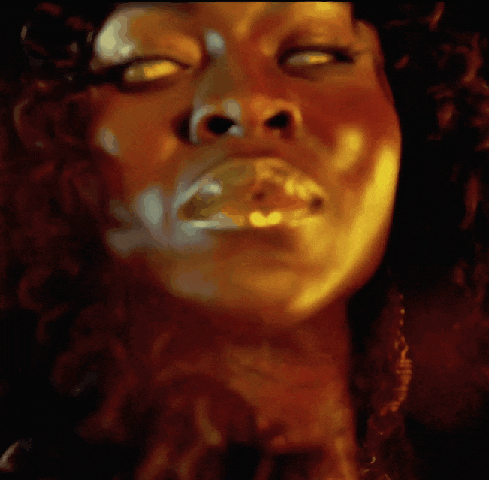
#african#afrakan#kemetic dreams#africans#brownskin#afrakans#brown skin#african culture#afrakan spirituality#orisa#Ìṣẹ̀ṣẹ#Ori Orun#Ori#oyo#ogun#lagos#nigeria#nigerian#nigerians#vodun#yoruba religion#shango#oludamare#Olodumare#Candomblé#Trinidad Orisha#Yorubaland#Ilẹ̀ Káàárọ̀-Oòjíire#santería#umbanda
40 notes
·
View notes
Text

The Yorùbá community is a prominent Niger-Congo ethnic nationality inhabiting southwestern and north-central Nigeria, as well as southern and central Benin. Collectively, these territories are referred to as Yorubaland. The Yoruba population totals approximately 44 million individuals.
The majority of this demographic resides in Nigeria, where the Yorùbá account for 21% of the nation's population, according to the CIA World Factbook, rendering them one of Africa's most extensive ethnic nationalities. Most Yoruba individuals communicate in the Yoruba language, which features tonal characteristics and holds the distinction of being the Niger-Congo language with the most native speakers.
The Yorùbá share territorial boundaries with the closely affiliated Itsekiri to the southeast in the North West Niger delta, the Bariba to the northwest in Benin, the Nupe to the north, and the Ebira to the northeast in central Nigeria. To the east lie the Edo, Ẹsan, and Afemai groups in mid-western Nigeria. Adjacent to the Ebira and Edo groups are the related Igala people situated in the northeast, on the left bank of the Niger River. To the southwest are the Gbe-speaking Mahi, Egun, Fon, and Ewe, who border Yoruba communities in Benin and Togo. To the southeast are the Itsekiri, who inhabit the north-western extremity of the Niger delta and have maintained a distinct cultural identity despite ancestral ties to the Yoruba.
Substantial Yoruba populations reside in other West African countries, including Ghana, Ivory Coast, Liberia, and Sierra Leone. The Yoruba diaspora comprises two primary groupings:
Recent migrants, predominantly relocated to the United Kingdom and the United States following significant economic and political shifts between the 1960s and 1980s.
Descendants of those displaced by the Atlantic slave trade, now residing in Cuba, Puerto Rico, Dominican Republic, Venezuela, Saint Lucia, Jamaica, Brazil, Grenada, and Trinidad and Tobago, among other nations.
19 notes
·
View notes
Text
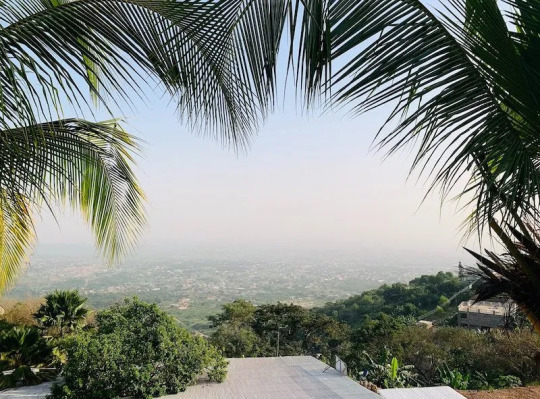
Èdè Yorùbá ní pàtàkì ní Ìwọ̀ Oòrùn Áfíríkà
Yoruba is spoken mainly in West Africa.
#yoruba#west africa#africa#beach#tropical#exotic#ocean#sea#lifestyle#sky#views#worldtalks#insta: worldtalksblog#travel#photography#country#translation#language#uploads
85 notes
·
View notes
Text
Enredamentos Históricos
Trindade e Venezuela são separadas geograficamente por apenas dez milhas em seu ponto mais próximo, mas são muito diferentes historicamente, politicamente e socialmente. Essas diferenças decorrem de histórias coloniais separadas (Império Britânico vs. Império Espanhol) com os legados resultantes de linguagem e afiliações políticas. Os dois países também têm pontos em comum, principalmente as reservas de petróleo e gás que alimentam suas economias. Ambos os países têm fortes comunidades católicas romanas, uma herança de um passado colonial espanhol compartilhado (Trindade esteve sob domínio colonial espanhol até o início do século XIX, antes de ser cedida aos britânicos como parte de uma negociação de tratado). E ambos têm fortes comunidades religiosas da diáspora africana, incluindo religiões baseadas em Yorùbá de Ifá/Orixá, no entanto, suas linhagens de iniciação Ifá/Orixá têm histórias separadas. Na Venezuela, a comunidade Orixá do século XX estava ligada às linhagens cubanas, com sacerdotes (conhecidos pelo título Babalawo ou Babaloricha) vindos de Cuba para realizar iniciações quando as pessoas não faziam a viagem para Cuba. Isso é muito diferente da religião dos Orixás de Trindade, que era em grande parte endogâmica nos séculos XIX e XX.
Embora Trindade fosse em grande parte um porto indireto de escravos, a colônia britânica recebeu um grande fluxo de pessoas, em relação à sua população, do então Golfo de Benin. No início de 1800, dez mil ou mais pessoas foram transportadas como cativas libertadas durante o bloqueio naval britânico da África Ocidental (Adderley 2006). Após sua chegada a Trindade, elas constituíam uma parcela significativa da população "de cor livre" na colônia britânica, onde, por meio de uma peculiaridade da lei espanhola que estava nos livros, elas podiam possuir terras. Isso se tornou muito importante para uma religião que está intimamente ligada à terra e que incorpora itens rituais sagrados no solo. A religião que surgiu em Trindade foi crioulizada pelo menos duas vezes, pois as pessoas da África Ocidental representavam muitas comunidades com línguas, culturas e histórias distintas, embora relacionadas. Perto do final do século XVIII, um grande número de fazendeiros franceses fugindo dos combatentes africanos pela liberdade no Haiti e outras colônias francesas do Caribe se reassentaram em Trindade e trouxeram consigo uma significativa população escravizada de ascendência africana em troca de concessões de terras do governo colonial. Enquanto alguns dos escravos nasceram na África, muitos outros foram removidos por gerações. Esses escravos crioulizados desenvolveram suas próprias expressões religiosas, semelhantes ao que agora é associado ao Vodu haitiano. Quando se estabeleceram em Trindade, esse complexo de práticas espirituais foi trazido à conversa com as expressões religiosas das comunidades africanas escravizadas existentes e aquelas dos recém-chegados contratados e libertos da África Ocidental. Dessa história complexa de mistura e diálogo, Trinidad Orisha surgiu em meados de 1800 com uma linhagem espiritual que continua até o presente.
No novo milênio, houve grandes mudanças em Trinidad Orisha, pois uma nova linhagem de Ifá baseada em Yorùbá (uma literatura oral contendo a história, sabedoria e conhecimento coletados do povo Yorùbá, acessados por meio de um sistema de adivinhação, todos sob o mesmo nome) surgiu localmente (Castor 2017, esp. cap. 5). Ifá também serviu como ímpeto para maiores níveis de comunicação entre os devotos Yorùbá na Venezuela e Trindade. No início dos anos 2000, uma linhagem iniciática de Ifá e ensinamentos da parte nigeriana de Iorubalândia estavam sendo estabelecidos em ambos os países. Isso foi impulsionado em parte por líderes religiosos locais viajando para a África Ocidental para iniciações, treinamentos e peregrinações a locais sagrados e festivais. Ao fazer isso, eles se esforçaram para se conectar à "fonte" histórica das religiões da diáspora e trazer o que aprenderam e vivenciaram de volta para casa com eles. Essa troca religiosa incluiu uma série de festivais e conferências em Trindade e Venezuela com participantes não apenas de ambos os países, mas também de nações de todas as Américas e da África Ocidental. Dentro dessas circulações, sacerdotes nigerianos de Ifá e Orixá (sacerdotes homens — Babalawo ou Babalorisa — e sacerdotisas, que detêm o título de Iyanifa ou Iyalorisa) também viajaram em ambas as comunidades, promovendo conexões entre os dois países.
Embodying Black Religions in Africa and Its Diasporas - Yolanda Covington-Ward
#trindade e tobago#venezuela#diáspora africana#yoruba#traducao-en-pt#cctranslations#embodyingbr-ycw#escravidão#orixás#trinidad orisha#ifá#iorubalândia#áfrica#nigéria
2 notes
·
View notes
Text
Quais culturas, práticas, rituais e tradições são comuns no paganismo de forma geral, englobando todas as religiões pagãs do mundo?
O Paganismo é tão diverso que seria como tentar descrever todas as cores de um arco-íris de uma vez só. Com um panorama geral, reunindo as culturas, práticas, rituais e tradições mais comuns que conectam as várias religiões pagãs do mundo, é possível explicar.

Culturas que influenciam o Paganismo
Celtas
Culto à natureza e às forças elementares.
Festivais sazonais, como Samhain (origem do Halloween).
Druidas como líderes espirituais e guardiões da sabedoria.
Nórdicos/Germânicos
Culto a deuses como Odin, Thor e Freyja.
Uso de runas para divinação.
Tradições ligadas ao Valhalla e ao conceito de honra.
Grego-Romano
Mitologia cheia de deuses (Zeus, Afrodite, Dionísio).
Rituais dedicados a divindades específicas, como sacrifícios e oferendas.
Egípcios Antigos
Conexão com a vida após a morte e a alma (Ka e Ba).
Rituais complexos para agradar deuses como Ísis, Rá e Anúbis.
Africanos e Afro-diaspóricos
Cultos aos orixás (Yorùbá) e entidades espirituais ligadas à natureza.
Ritmos, danças e cantos em rituais.
Indígenas e Xamânicos
Práticas de conexão com espíritos animais e forças naturais.
Uso de tambores, ervas e rituais de cura.
Práticas Gerais no Paganismo
Adoração da Natureza
A Terra é sagrada e vista como a mãe universal.
Montanhas, rios, árvores e animais são reverenciados.
Politeísmo ou Panteísmo
Adoração de múltiplos deuses ou a crença de que tudo no universo é divino.
Rituais e Magia
Uso de elementos como fogo, água, ervas, cristais e símbolos.
Práticas como feitiços, encantamentos e invocações.
Divinação
Métodos de prever o futuro ou obter sabedoria, como runas, tarot, astrologia e leitura de ossos.
Meditação e Viagens Espirituais
Técnicas para entrar em estados de consciência alterada e conectar-se com o divino ou os ancestrais.
Rituais e Tradições
A Roda do Ano (Ciclos Solares)
Oito festivais sazonais celebram o ciclo da natureza:
Solstícios: Yule (Inverno) e Litha (Verão).
Equinócios: Ostara (Primavera) e Mabon (Outono).
Festas de transição: Imbolc, Beltane, Lughnasadh, Samhain.
Celebrações Lunares (Esbats)
Rituais realizados em fases específicas da Lua (cheia, nova, crescente, minguante).
Rituais de Iniciação
Marca a entrada em uma tradição ou comunidade pagã.
Magia com Elementos
Representação dos elementos Terra, Ar, Fogo e Água nos rituais.
Rituais de Passagem
Celebrações como nascimento, puberdade, casamento e morte.
Honra aos Ancestrais
Rituais para pedir sabedoria ou agradecer os antepassados.
Tradições Espirituais Universais
Altares e Oferendas
Espaços dedicados a divindades ou forças naturais, com objetos sagrados como velas, cristais, incensos e imagens.
Dança e Música
Instrumentos como tambores e flautas são usados para elevar energia e criar conexão espiritual.
Uso de Ervas e Plantas Medicinais
Sabedoria ancestral para cura física e espiritual.
Roda da Vida
Conexão com ciclos naturais como nascimento, crescimento, morte e renascimento.
Celebração das Estações
Práticas que honram as mudanças na Terra, como o plantio e a colheita.
Símbolos e Objetos Sagrados
Pentagrama: Representa os cinco elementos e proteção.
Cristais: Usados para canalizar energia.
Runas e Amuletos: Para proteção e sorte.
Cálice: Representa a Deusa e a energia feminina.
Athame: Adaga cerimonial para direcionar energia.

Resumindo, o Paganismo celebra a conexão profunda com a natureza, o respeito aos ciclos da vida e a busca por harmonia com o mundo ao redor. É uma espiritualidade viva, adaptável e super rica!
moots: #Paganismo #EspiritualidadePessoal #NaturezaSagrada #CaminhoPagão #MitologiaPagã #Politeísmo #DeusasEDeus #RituaisPagãos #Sabás #MagiaNatural #CiclosDaNatureza #PaganismoEclético #Wicca #Druidismo #Heathenismo #MitologiaNórdica #MitologiaGrega #MitologiaCelta #TradiçõesPagã #MagiaEnergética #DivindadesAntigas #EspiritualidadePagã #AltarPagão #SagradoFeminino #ConexãoComANatureza #RituaisDaLua #MagiaDasErvas #MagiaDoDiaADia #ReconstrucionismoPagão #DeusaInterior #Paganism #SacredNature #SpiritualJourney #EclecticPagan #Polytheism #PaganPath #GoddessesAndGods #NatureCycles #Sabbats #NaturalMagic #WitchcraftAndMagic #AncientGods #PaganTraditions #WiccaWitchcraft #Druidry #Heathenry #NorseMythology #GreekMythology #CelticMythology #SacredFeminine #LunarRituals #HerbalMagic #EverydayMagic #Reconstructionism #AltarsAndOfferings #PaganCommunity #EarthSpirituality #MysticalJourney #DivineConnection #ModernPagan
#paganismo#druidismo#paganism#bruxaria#quotes#magia#witchblr#witchcraft#grimoire#mitologiagrega#nordico#nórdica#natural#bruxa#celta#helenismo#hellenic pagan#heathenry#hellenic polytheism#heathenismo#grimório#green witch#fogo#folk witchcraft#folk magic#deusa#deus#duidry#agua#altar
4 notes
·
View notes
Note
"Also I headcanon Mel as Yorúbá because her VA is and so am I" - wait, no, you're actually cooking with this one. I need you to expand on this take. I personally HC that Noxus was meant as a pseudo -equivalent of Africa and more specifically Nigeria, but I wanna hear your take.
(Also, Mel in asoebi would fucking eat low-key. I'm picturing a rich emerald green or gold number for her personally.)
very real of you. noxus being an equivalent of africa/nigeria more specifically would eat (honestly even just west africa in general since yorùbá people are also in neighboring countries outside of naija). only thing we have to do is maybe account for settlers who assimilated i guess cause the champions of noxus in league of legends are various races (and species i suppose) lol. she would look beautiful in asọẹbí. it's amazing how anything looks good on her tbh but yea you're right about the rich emerald green and gold. those colors always bring out her eyes best
#i'm more of a silver girlie personally and i think silver probably suits me best#but mel and gold?? immaculate.#asks#anonymous#i don't play LoL btw i just enjoy the lore but that likely goes for most arcane fans lmao
4 notes
·
View notes
Text
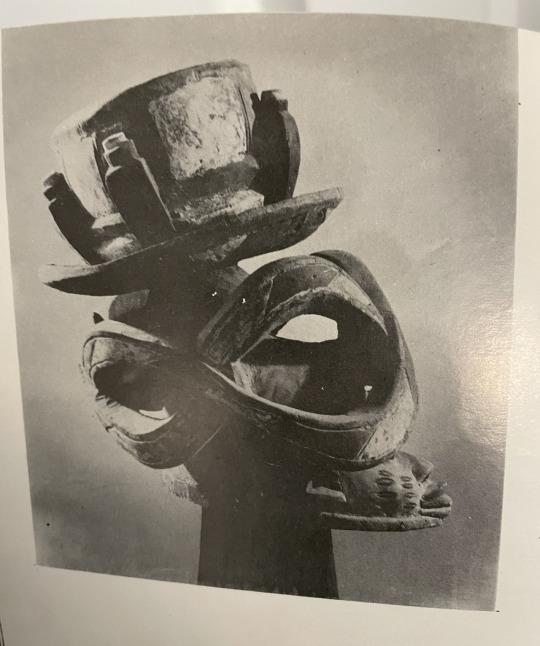
SPACE!
Yorùbá sculpture, date & maker currently unknown
14 notes
·
View notes
Note
or wait rather than curious abt nationality i was wondering what the language was in your header, languages r kinda my own interest myself
I'm mostly American, my family sorta is sorta isn't; their culture wasn't american in the 60s & 70s but it's where I was born and reared & they've all americanized pretty heavily since then (their kids are all 100% USA namean)
when I was a child I spoke several languages & tended to run them together, Korean and German and Russian
the header is in Slovenian, which has been my special favorite language for about three years now ^_^
I cycle through language fixations; my all-time reigning favorite is Yoruba, it's sophisticated and beautiful and its accent in other languages is superb; Yoruba speakers are masters of picking up other languages too, admirable and covetous. Yorùbá sọ̀rọ̀ sókè jẹ́ ọ̀kan lára àwọn ìró tó dára jù lọ tí ẹ̀dá lè dá!
Slovenian's shared words with Russian and Polish made it a natural area of study for me; I started using it in my writing and have been slowly letting it & Croatian & Serbian expand my understanding of that area of the world.
Ko govorim na glas (out loud), zveni Slovenščina zelo blizu ruščini; moja teta brez težav razume, kar je zabavno!
Cyrilica nekaterim povzroča težave, zato je slovenščina način za transliteracijo nekaterih od teh ruskih idej. The way a given language shapes my thoughts is of intense interest to me, I'm driven to find some combination of words that will work, that will fix it all.
#language#slovenian#diacritical marks are one of my great passions#we are colleagues now#minor syntactical differences can change the psychic texture and impact of the mind so deeply - some part of me believes in the magic of it
22 notes
·
View notes
Text
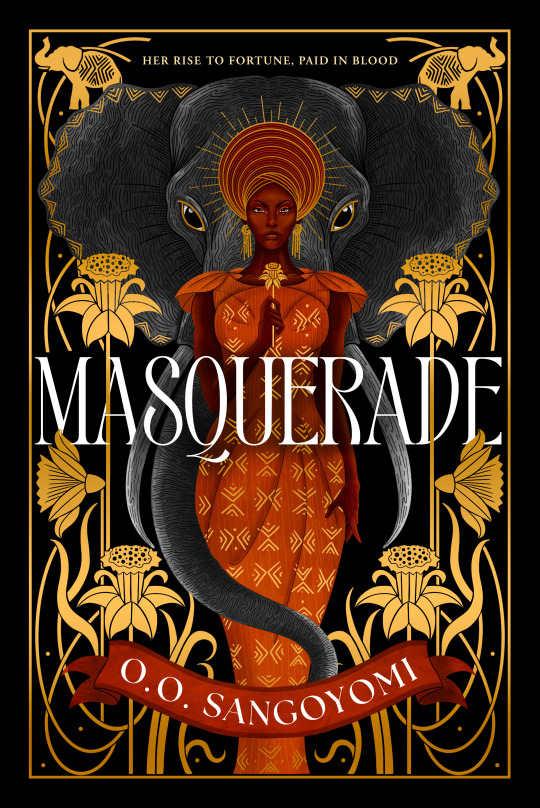
2024 reads / storygraph
Masquerade
historical fiction set in 15th century West Africa
follows a young woman from Timbuktu, recently conquered by the the warrior king of Yorùbáland
her guild of blacksmiths were already shunned as witches, and their conditions worsen under Yorùbá rule - so when she’s kidnapped by the king to be his wife, she decides to accept that it’ll be a better life for her, as long as she can get her mother’s blessing
but as months go by without her mother being found, and political tensions rise, she must decide what she wants
#masquerade#aroaessidhe 2024 reads#ahh... I enjoyed this in the beginning but I ended up being SO frustrated by the MCs decisions and inconsistencies.#click the storygraph link above to read all my thoughts tbh im not gonna copy everything in here#she’s like man this guy kidnapped me and is drugging me and treats me like an object and probably is lying about trying to find my mother :#well I should definitely try and uncover and tell him about this uprising happening under his nose so I can help him trust me!#she tells us she’s desperate for freedom and safety and autonomy and yet she’s doing so much to stay with this man who#she’s AWARE is NOT giving her autonomy AND she doesn’t give a fuck about anyone else’s freedom or autonomy?#she doesn’t even WONDER about the slave revolts or blacksmith strikes other than how can she stop them?#she’s naive and innocent but she’s also viewed as this brilliant military strategist and cunning at court politics#other than these moments she’s very naive and doesn’t make any obvious connections about what the other women#or her mother are up to (which considering the amount of speeches about men underestimating women she makes……okay)#thing is like there was some great setup to go in some really interesting directions!#if you wanted to go down the route of her goals making her singlemindedly ruthless and selfish and morally grey and rising to power#then commit to that! make her investigate the revolution and give her a reason to betray them anyway.#if you want to make it like she TRULY had no choice in becoming what she did (because any attempt to escape or connect#with the revolution had tragic consequences) then do that! But she like…..never tried anything.#She just accepted everything and tried to help the king because…I don’t even know!#if you like hades and perspephone you won’t like this. if you don’t like hades and persephone you won’t like this.#(i thought it had just been inaccurately compared to H&P - not written to reference H&P)#agh. it could have been good!
3 notes
·
View notes
Text
RE: The Origins of American Papa Legba
Unlike my previous posts, this one is about the actual deity Papa Legba.
Upon further investigation, it appears that American Papa Legba (Papa Limba / La Bas) is indeed an amalgamation of Dahomean Legba and the Yoruba trickster god Eshu (Èṣù). This is because he traces his lineage to Haitian Papa Legba. In Haiti, Dahomean Legba was refracted into Haitian Papa Legba, Kalfou, and the Gede; as far as I can tell, this refraction was not transmitted to America. This would explain why American Papa Legba retains more aspects of Dahomean Legba, and is similar to Haitian Papa Legba AND Kalfou. Prior to the 19th century, New Orleans Voodoo had little Dahomean influence, being mostly a fusion of Senegembian and Kongolese traditions. Following the Haitian Revolution, a huge influx of Haitians arrived in New Orleans, bringing with them their deities and religious practices. “The 1809 migration brought 2,731 whites, 3,102 free persons of African descent, and 3,226 enslaved refugees to the city, doubling its population.”
This is why Marie Laveau-era New Orleans Voodoo is this fascinating amalgamation of Senegembian, Kongolese, Catholic, and Haitian traditions. It is for this reason that American Papa Legba is portrayed in a similar manner to his Haitian counterpart, where he is depicted as a limping old man who carries a crutch. But unlike in Haiti, there is no American Kalfou. Papa Legba is the Doorkeeper AND the guardian of the crossroads, and it is obvious that he is not actually feeble. The reason he limps is because he has one foot in the world of the living and one foot in the spirit world; his crutch is actually his key to the “door” between the two worlds. (He’s literally just pretending to be an old man!) There is also a very playful side to his personality, where he’s literally described as pranking children. His love of dogs, music, and fun can all be traced back to Dahomean Legba. He is completely terrifying when he is angry though! A lot of the best horror stories to come out of Voodoo involve Papa Legba’s bad side.
There is a nonzero probability that ROBERT D. JOHNSON is getting tortured for eternity by Papa Legba as we speak!
Deities such as Papa Legba, Dahomean Legba, Elegua, and Kalfou can all be categorized into a group with shared origins in the Yoruba deity Eshu (Èṣù). Although they have diverged from each other, it is common for sources to use the terms “Legba” “Elegua” and “Eshu” interchangeably. As such, it is possible that I have incorrectly confused “Eshu” with “Elegua” in some places. Sorry for the confusion.
FULL CITATIONS FOR SOURCES MENTIONED:
Fandrich, Ina J. “Yorùbá Influences on Haitian Vodou and New Orleans Voodoo.” Journal of Black Studies, vol. 37, no. 5, 2007, pp. 775–91. JSTOR, http://www.jstor.org/stable/40034365
Haitian immigration : Eighteenth and Nineteenth Centuries. The African-American Migration Experience. (n.d.). https://www.inmotionaame.org/print.cfm@migration=5.html
#commentary#the loa (hazbin hotel)#big papa legba#you have no idea how badly i want my deviantart oc to be in the canon of this fucking show...!
2 notes
·
View notes
Text
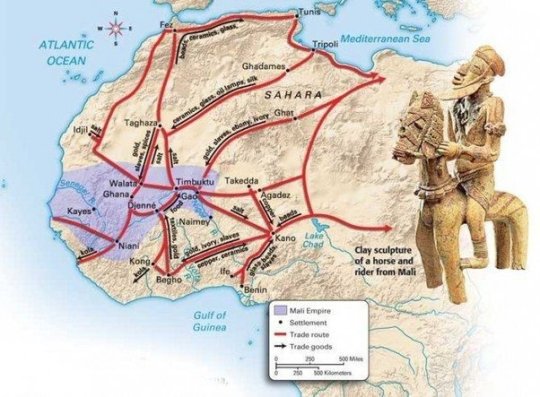
What do great civilizations have in common?
"What common attributes do great civilizations share? They typically possess access to both local and global markets, the capacity to attract a diverse population eager to settle for the purposes of commerce and education, accepting influence and reflecting influence, I will use African examples, but this is true the world over.
There was a saying "To cure mange for a camel, use bitumen; to cure poverty, go to the Sudan." this was said at the time of the Wagadu or Ghana empire when great trading trains were crisscrossing the Sahara, both the Wagdau and Gao were mentioned as the richest kingdoms in the world and their Kings the most wealthiest beyond compare, this was hundreds of yrs before the now famous Mansa Musa of Mali, it’s ultimate successor.
These conceptions do not need to extend outside the continent although the more extensive the better, example.
These connections between West and West-Central Africa to the world are anathema to historical traditions in which ‘Africa” s isolation from the rest of the world, before contact began with Europeans, is assumed. But they emerge from a number of factors. As the historian Jan Vansina showed, similar techniques in wood-carving found from Yorùbá regions as far south as Loango suggest shared techniques and exchanges. Seventeenth- and eighteenth-century carvings from the Kuba kingdoms depict the playing of warri, a game found widely further north in West Africa, as well as in East Africa.
Other evidence suggests that these exchanges then interconnected with the long-distance routes linked to the Sahara – and these patterns may in turn have influenced how the Kongolese reacted when the Portuguese first arrived in the 1480s.
Kongo’s connection to long-distance trade routes is the only logical explanation for how sugarcane – long cultivated in the eastern Mediterranean and in the Arab worlds – grew in Kongo before the Portuguese arrival.
Long-distance trade can also help to explain the use of a shell currency in Kongo (the nzimbu), for the use of the nzimbu surely was not unrelated to the experience of the use of the cowrie-shell currency in West Africa and the Sahel; the Kalahari regions to the south were connected to the Indian Ocean trade by perhaps the ninth or tenth century, and cowries may have been involved in this trade – which offered a route for this influence to spread to Kongo addition, there seems to have been an important spiritual dimension that connected the forest Kingdom of Kongo with that of Benin to the north, for it is noteworthy that both Edo and Kongo peoples (and, indeed, peoples of the Kingdom of Ndongo in northern Angola) used diamond-shaped crosses as a religious symbol prior to the arrival of the Portuguese. In Kongo, the ‘cosmogram’ connected the worlds of the living and the dead, and was used widely on textiles and bowls used for daily life, as well as later in Christian art.
The use of the cross as a religious symbol among the Edo also suggests some cultural and perhaps commercial connection between Edo and Kongo peoples, as does the shared use of shell currencies, similar wood-carving techniques and the presence of sugarcane in Kongo, since all had likewise existed in Benin prior to the Portuguese arrival.
Yet how did these connections develop, in a region famous for its thick forests and swamps? As we have seen in other parts of the continent, rivers and seaways were roads. Many peoples along the coasts of West-Central Africa were good boat-builders, with the Vili of Loango remarked upon as such by the Portuguese in the sixteenth century. There were fishing groups to be found everywhere, and their skill in making seagoing ships is shown by the presence of Bubi peoples on the Island of Bioko by the time the Portuguese arrived in the fifteenth century.
But The idea that Europeans ‘brought’ seafaring to Africa must also, therefore, be challenged. Thus, it was most likely through African navigators that related religious and aesthetic practices grew up; and when the manikongo Afonso I wrote in 1526 of a number of traders from Benin resident in the Kongolese port of Mpinda, it is possible that they found their way there in local embarkations rather than through Portuguese networks.
The Kongo ‘cosmogram’ Kongo may not, therefore, have been as isolated from other parts of West Africa as has hitherto been supposed.
From the book A Fist Full Of Shells, By Toby Green
#african#afrakan#kemetic dreams#africans#afrakans#brown skin#brownskin#african culture#ghana#mpinda#kongolese#kongo#europeans#great countries#ancient civilizations#civilization#great civilization#afonso#benin#edo#sahara#mansa musa#wagdu#sudan#ta seti#north africa#a fist full of shells#toby green#west africa#mali
38 notes
·
View notes
Text
Ancestralidade
Toda vez que me olho no espelho
Vejo refletido nos meus olhos
A moça vestida de branco
De turbante, dançando,
Daqui escuto seu canto
Em yorùbá me chamando
E ela segue esperando,
O dia que eu a permita ser eu.
6 notes
·
View notes